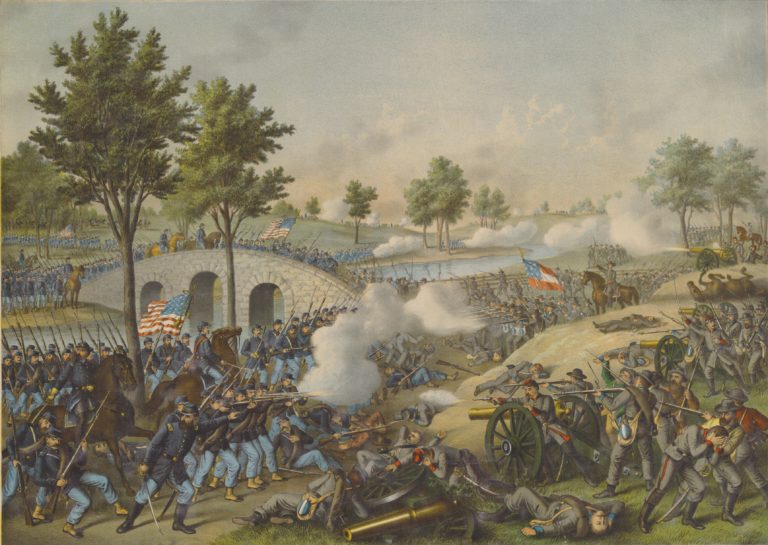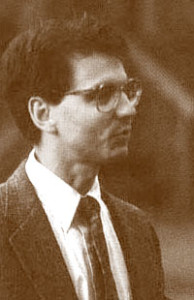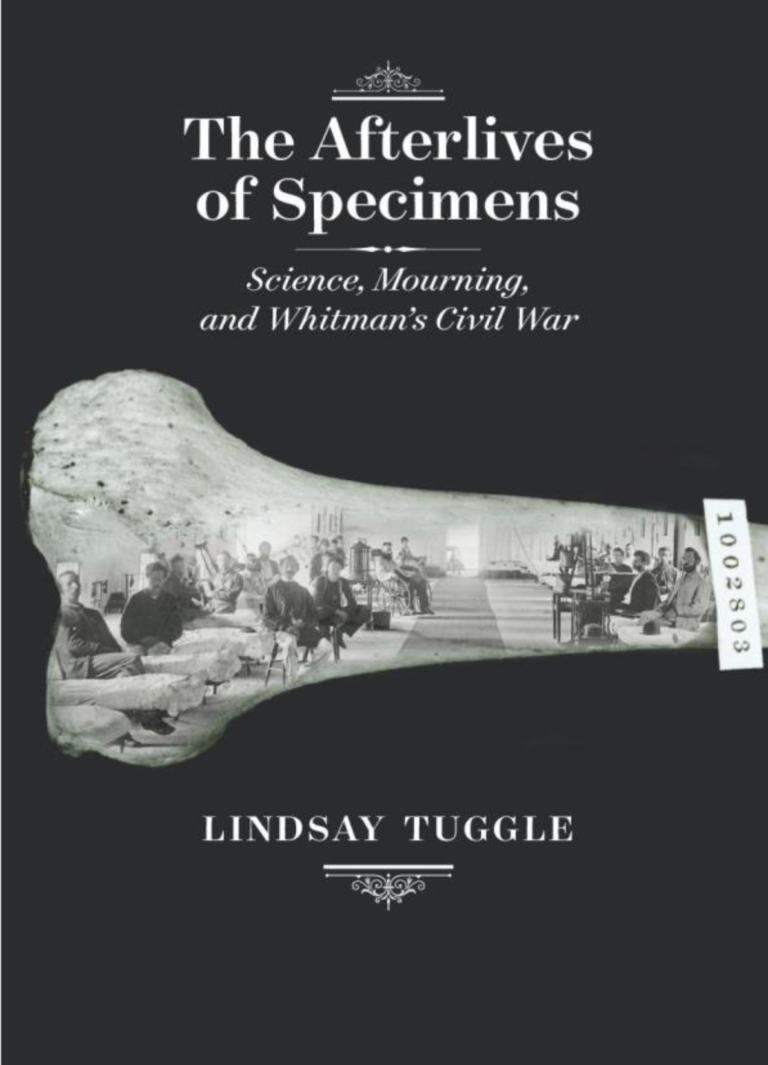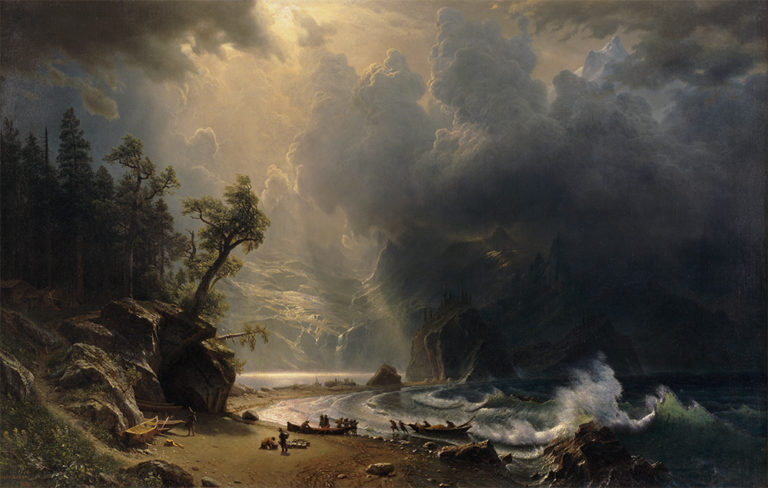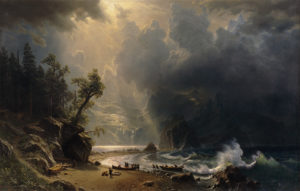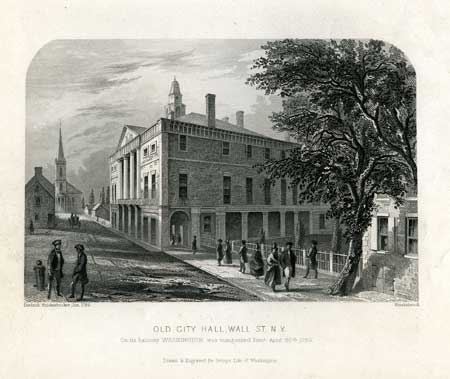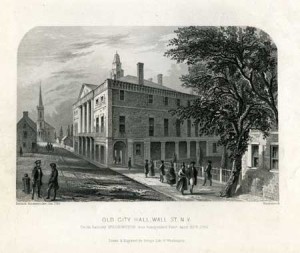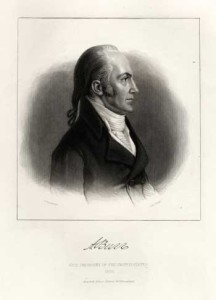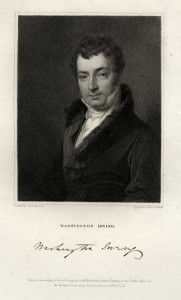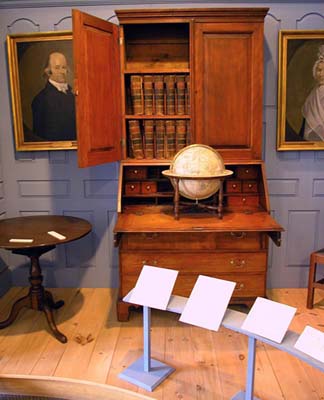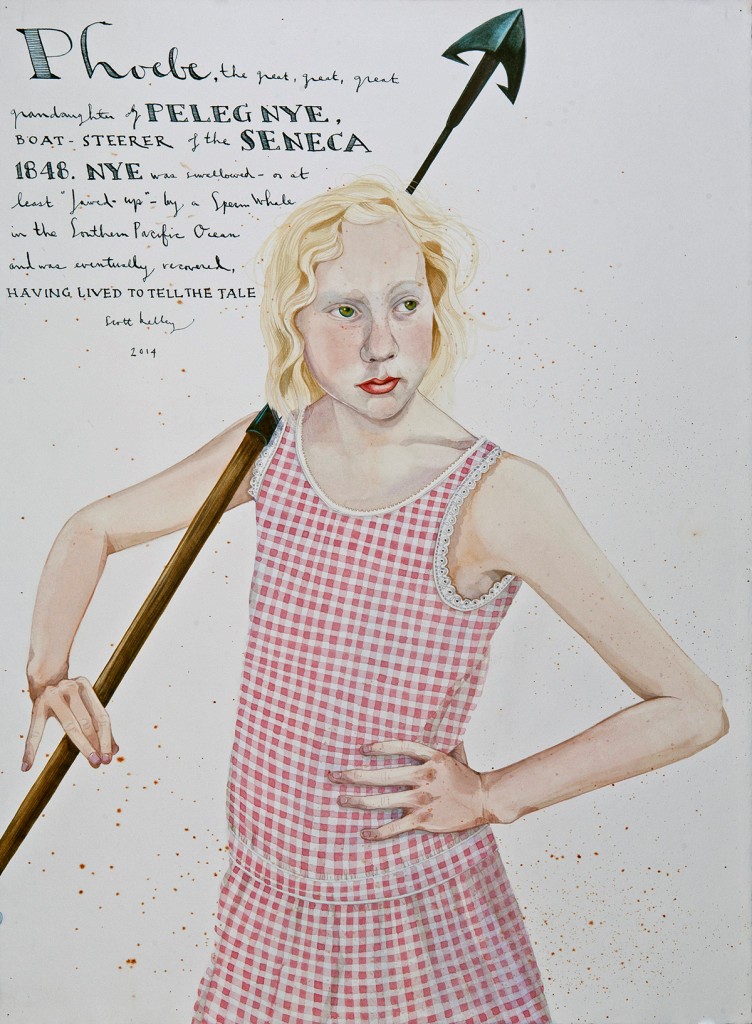Stories of Native Presence and Survivance in Commemoration of the 151st Anniversary of the Sand Creek Massacre
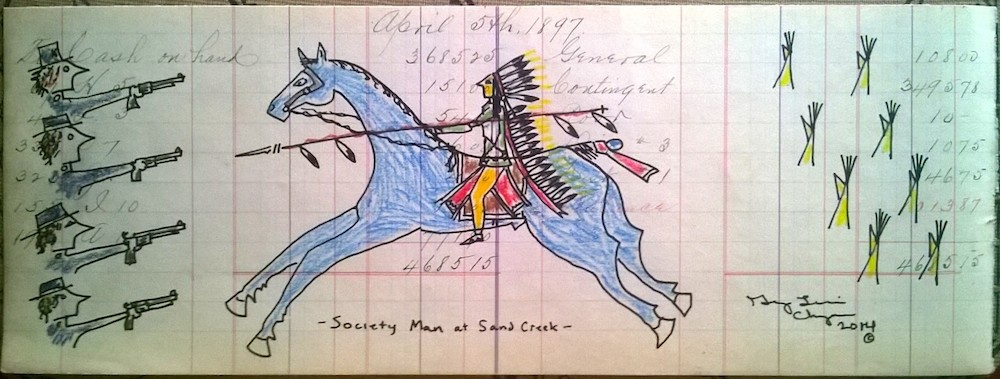
Statement of Poetic Research
On the cold morning of November 29, 1864, a force of U.S. soldiers under the command of the minister/Colonel John Chivington carried out a brutal and unprovoked attack on a peaceful Cheyenne and Arapaho encampment at Sand Creek in southeast Colorado Territory. In the resulting carnage that spread over forty square miles and into the next day, at least 200 Cheyenne and Arapaho were killed, with many scalped and mutilated, including a large number of women, children, infants, and elderly. Determined by the U.S. military and government in the ensuing months to be a massacre, this event forms one of the most infamous chapters in Colorado history and the annals of the American west. For Cheyenne and Arapaho people, whose legal right to Colorado lands were denominated in treaty covenants with the U.S. government, the massacre served to drive them from their ancestral homelands and reduce them to the status of exiles.
The far-reaching impacts of this massacre of Cheyenne and Arapaho people, as well as its broader effects on Native peoples of North America, was the concern addressed by Acoma poet Simon J. Ortiz in his seminal poetic work, From Sand Creek (1981). “How to deal with history,” our collective American past that so often excludes Native people? This question forms the central organizing concern of the work as a whole, and operates as a provocation to see the world from a different perspective. And not just to do so passively, but also to interrogate a largely one-sided conception of the past that has been reinforced in the dominant culture’s narrative of Sand Creek, which is still referred to by some as a “battle,” rendering Native people “invisible.” The maintenance of this other posture is what tolerates the perpetuation by so many Americans of “an amnesia that doesn’t acknowledge that kind of history.” This sort of response, however, is not available to all, for as Ortiz perceptively asks, “but Indians? What choice do we have?”
These simple but vital questions are ones that the Native writers and artists included in this issue of Common-place also seek to address through their own words and art. The positioning of the poetry, prose and art around the specificity of Sand Creek on its 151st anniversary is not done due to it’s “uniqueness” within frontier history, for the event itself is not unique, but because of the place that Sand Creek holds within a broader context of systematic oppression and violence, spanning several centuries from Mystic River, Block Island, Fort Neoheroka and Gnadenhutten to Clear Lake, Bear River, Sand Creek, the Marias River and Wounded Knee . . .
It is hoped that the creative insights presented by such a rich diversity of Native voices can serve as a basis for a more comprehensive conception of what such traumatic events mean in their historical relativity, while also demonstrating the capacity of Native people and cultures to resist, persist and survive. The joining of these words as a means of repudiating narratives of victimry and tragedy in favor of an active presence is what Gerald Vizenor defines as “survivance.”
The legacy of the Sand Creek Massacre has been brought into sharp focus over the last several years at the University of Denver where I teach, which just last year celebrated its 150th anniversary. The intertwining of DU’s anniversary with the horror of Sand Creek is no mere coincidence in time or place within the mythologized history of the American West and its “civilizing” and “winning” that Ortiz deconstructs through his poetry. It is the direct result of the intentional actions and inactions of settlers, soldiers and government officials, including DU’s founder, John Evans who was Governor of Colorado Territory at the time and also Superintendent of Indian Affairs. The massacre that precipitated the wholesale removal of two distinct Native societies from Colorado, whose rightful claims to the land had been validated by the U.S. federal government through the ratification of the Fort Laramie Treaty of 1851, and was of such devastating consequences to the Arapaho and Cheyenne people that they continue to live with the effects of the trauma inflicted upon them. And always to remember. It is a regrettable truth that the legacy of Sand Creek seems to have laid buried for so long within DU’s institutional memory, perhaps reduced to that shadowy absence “within” what Ortiz calls “the socio-cultural-historical schematic of ‘victors and victims’” that naturalize such events while simultaneously erasing them from our collective cultural memory. As we lament and even condemn such a process, we must also cultivate and maintain an awareness of the direct intentionality that leads so many to unknowing, along with the failures of those who led us to this place and continue to work to make people forget.
While the effort to confront the pervasive nature of the historical amnesia Ortiz speaks of is one of the goals of the selection of work presented here, we know that it can only have a limited value if operating in isolation and must be part of a broader network of creative labors to be truly successful. Hence, this issue of Common-place is joined to previous collaborations including a special feature on Native writing and art in commemoration of the Sand Creek Massacre included in the Fall 2014 issue of Denver Quarterly. As editors of the feature, Eleni Sikelianos and I addressed the tangled interconnections of these events at DU with an awareness that “history is not something of or in the past, but the very field we walk upon.” Indeed, the Native writers who contributed work to this previous project, many of which are also included in Common-place, highlighted the myriad ways that the Sand Creek Massacre and related events impact Native people and communities, while continuing to weigh on the contemporary lives of Native people. Together, both selections are intended to offer a means to create a more complete and multivocal understanding of our collective pasts and to confront the distressing truths that lie hidden in a way that eschews the debilitating narratives of tragedy and victimry. In an essay published at Salon.com on the day of the anniversary, November 29th, I further explored the ways in which memory, trauma and place are inextricably connected through historical events and the process by which particular narratives gain legitimacy by the creation of historical monuments, but also how the creation of respectful and honest memorials can contribute to healing and peace.
During this same time and growing out of some ongoing discussions about the place of Sand Creek in Colorado history and John Evans’ role as territorial governor, I, along with a small group of other concerned faculty, formed a scholarly research group to formally address these issues. As our work marked the first time that members of DU’s academic community had confronted this question, and the difficult truths to which it is inextricably connected, in a direct and comprehensive way, our task often seemed overwhelming. It was the unanimous belief of our committee members, however, that after so many years such an effort was long past due, regardless of the challenges and internal tensions our research brought to the surface. At Northwestern University, which was also founded by Evans, the administration formed an official committee to conduct their own examination of Evans’ actions as a response to protests from their Native students and concerned community members. The independent efforts of the two groups of scholars promised an unprecedented consideration of our shared institutional heritage, while marking an extraordinary opportunity to engage with Cheyenne and Arapaho communities to promote healing and peace, as well as renewed friendship and collaboration.
From the onset, we at DU recognized the critical importance of engaging with the Cheyenne and Arapaho communities as a fundamental component of our efforts to understand the complexity and multilayered narratives that make up the history of the University of Denver, the state of Colorado and the frontier West. Accordingly, we reached out to representatives of survivor descendants from Cheyenne and Arapaho communities residing in Montana, Wyoming, Colorado, and Oklahoma and invited their participation in the project. Through our meetings and ongoing communications with Native community members including, Gail Ridgely (Northern Arapaho), Otto Braided Hair (Northern Cheyenne), Karen Little Coyote and Joe Big Medicine (Southern Cheyenne), and Henry Littlebird and Chief Willey (Southern Arapaho), among others, as well as consultations with respected scholars and historians who are widely recognized as the leading experts on Sand Creek, such as Gary Roberts, David Halaas, and Tom Meier, our study group generated a scholarly report that we hoped would offer a more inclusive and nuanced conception of this traumatic period of Colorado and Western American history. It was an effort that was guided by a search for truth and shaped by a mindful independence from the artificial partitions imposed largely by arbitrary disciplinary categories endemic to historical methodologies that tend to assign ultimate authority to colonial documents and testimony.
In addition to the literary projects and the sharing of stories with the tribal representatives noted above, the University of Denver also hosted numerous lectures to give members of our community the opportunity to attend readings and exhibits featuring Native scholars, writers and artists who so generously shared stories of Native cultural survivance. Among these we were honored to host the renowned Cheyenne-Arapaho scholar and educator Henrietta Mann, who shared White Buffalo Woman’s (her great grandmother) harrowing account of traumatic experience and survival at Sand Creek, as well as Cheyenne artists George Levi and Brent Learned, Merlin Little Thunder, B.J. Stepp and Nathan Hart, whose drawings and paintings on the theme of the massacre function to reclaim the narrative of these events from the inflexible apparatus of colonial historiography that tends to consign Native people and cultures to a static and doomed past.
Through these participants’ memories of their ancestors and their enduring active presence in stories passed forth from one generation to the next, such accounts live on and demand to be told, but also listened to. We took it as our obligation and responsibility as scholars and educators, but also as occupiers of a land so violently appropriated from its rightful Native owners, to listen to the Native peoples who generously shared their stories and memories with us. And it was the insights gained from these encounters that allowed us to offer a fuller accounting of the historical, political and social contexts out of which the Sand Creek Massacre emerged. For reasons that remain unclear, the scholars involved in the production of the Northwestern report decided to take a different approach without the active participation of the Cheyenne and Arapaho tribal communities who were the very people most affected by the truly horrific events that both study groups worked to understand. This crucial distinction, perhaps, best typifies the contrasting methodologies that each group employed in their research and seems to reflect strongly in the apparent divergences in our findings, which again recall Ortiz’ questions about the systemic and consistent exclusion of Native voices and perspectives in American history.
While both reports severely criticize the actions John Evans took as Governor of Colorado Territory, and his failures in his duties as Superintendent of Indian Affairs, the DU report found him to bear culpability for the Sand Creek Massacre due to his position as the highest political authority and his significant role in stoking the violent anti-Indian sentiment and dangerous hostility in the months leading up to the massacre. This finding was echoed and specifically cited in the official apology conveyed to the Arapaho and Cheyenne people by Colorado Governor John Hickenlooper on the steps of the Capitol building in Denver on December 3, 2014. The Northwestern committee came to a different conclusion which was viewed by many, including their own Native students, as ultimately absolving John Evans of responsibility for the massacre using the relativist claim that he was a “representative figure who believed in and lived out the dominant ideas” of his time. But as Ortiz illustrates, there was another way, there was always another way: “pain and death did not have to be propagated as darkness and wrong and coldness; they could have listened and listened and learned to sing in Arapaho.” Despite the differing conclusions of our committees, both universities are moving forward with efforts to acknowledge historic wrongs and repair the damages of the past to create a more welcoming and inclusive environment for Native students on their respective campuses.
It is a regrettable truth that the founder of Northwestern and the University of Denver, John Evans, forever binds our institutions to the Sand Creek Massacre. This past, our past, however, does not have to define our futures, nor the relationships we have forged with Cheyenne and Arapaho communities. As members of the DU community we have chosen to no longer hide from the reality of the past and to underscore the belief that true healing can only take place when the legacy of history is reckoned with in an honest and open way. Not through obfuscation, neglect, equivocation and silences. We owe it to ourselves, and the students we are dedicated to serving, to resist this easier path at every turn. To stand against the implacable attitudes of tradition and nostalgia that all too often renders necessary change inordinately slow or worse yet, ineffective. And we also owe it to the memory of courageous leaders such as Lean Bear, White Antelope, Big Man, Left Hand and Black Kettle who represented their people with honor and dignity in the face of violence and hatred and greed, as well as men like the U.S Cavalry officers Silas Soule and Joseph Cramer, men that refused to be driven by the dominant ideas of the time and instead understood the injustice that is driven by hatred and greed, and who stood up against it. Men who give Ortiz reason, perhaps, to turn away from the incapacitating power of hopelessness and despair: “I know/ there is a world/ peopled with love./ I know/ there are people/ who speak/ not in undertones/ but gallantly and joyously,/ who are valorous/ with simple courage.” Such are the people who truly deserve to be remembered and honored in history and in monuments over those who perpetuated a shameless legacy of violence and oppression.
Most importantly, we maintain our most hallowed responsibility to the original owners of the land on which the University of Denver stands, the Arapaho and Cheyenne people who were driven from their homes, from their bountiful landscape, from their places of tranquility and their holy places and sacred sites . . . We owe it to the land itself. Likewise, for Indigenous peoples of the Americas, this history, and the struggle against greed, hatred, oppression, deracination . . . extermination . . . a seemingly unending series of catastrophic events that continue to hold power and affect their lives and communities, must be remembered. Throughout North America, as the writers and artists included here in Common-place bear witness, the wreckage of this history has now been accumulating for over 500 years . . . And Native people continue to respond in their own creative ways to the results of this enormity.
Despite this history and the traumatic events it set into motion, however, the people have persisted. Native peoples of North America have persevered and the people have continued to live, to love, and to flourish—to sing and tell stories, their stories. For as Ortiz writes, “I have always loved America; it is something precious in my memory in blood and cells which insists on story, poetry, song, life, life.” This selection of creative work in Common-place offers simply one small contribution to the ongoing endeavor to open up new spaces for Native writers and artists to share their own stories, memories and histories within a context where such perspectives are so often denied a presence, intentionally or not. So while this latest journal selection includes new work by several of the writers from the Denver Quarterly feature, such as George Levi, Kimberly Blaeser, Frances Washburn, Toni Jensen, Crisosto Apache, Byron Aspaas, and Sara Ortiz, it also includes the deeply affecting voices of Simon Ortiz, Lance Henson, Margaret Noodin, Michael Wasson, and Brent Learned.
This collective work is offered as a virtual gathering of Native voices and a diverse yet unified testament to the power of memory in giving substance to the ideas I have attempted to convey through these admittedly insufficient words. In spite of its inherent limitations, my hope is that this feature can offer renewed testimony to the resiliency of Native people; that combination of persistence, resistance, and survival that Gerald Vizenor has championed in his work, to create within the ether of these virtual pages a sense of Native presence and actuality over absence, nihility, and victimry . . . Survivance, in all of its forms, is the renunciation of dominance and oppression in “the continuation of stories.”
Billy J. Stratton
University of Denver
Further Reading:
Ortiz, Simon. From Sand Creek: Rising in this Heart which is Our America. 1981. Tucson: University of Arizona Press, 2000.
“Report of the John Evans Study Committee,” Northwestern University, May 2014.
“Report of the John Evans Study Committee,” University of Denver, November 2014.
Stratton, Billy J. and Sikelianos, Eleni. “In the Shadow of Mt. Evans,” Denver Quarterly 49:1 (2014), 2-3.
Vizenor, Gerald. “The Aesthetics of Survivance: Literary Theory and Practice.” Survivance: Narratives of Native Presence. Ed. Gerald Vizenor. Lincoln: U Nebraska Press, 2008: 1-24.
Crisosto Apache
Of Thunderous Blood Storm
The rain fell upon the earth for forty days and forty nights. [Genesis 7:12]
dawn bleeds through biosphere, back to a beginning—
clouds gather from onyx and water falls, always—
in a beginning, as (s)he / our hands caress,
in a beginning as (s)he / we are meant to exist,
in a beginning (s)he /our voice heaves
immemorially—
blood shot eyes clamp down around all fingers—
seam of sideways light filters through glass caps—
tireless legs climb up our white mountainside—
wet clay debris mesh between toes and dermal ridges—
water slab backs hinder an exertion to higher ground—
russet liquid skirts channel continuously through embankments—
sheaves slide underfoot, coursing always before and now—
top center veins mend through reformation of red skin—
memories of mankind work in this same way,
memory is the skin that is all our body,
memory is the milk that is our feminine,
memory is the fist that is our masculine,
memory is the cradle that is our born,
memory is the heap that is our stolen,
memory is the council that is our dead and massacred,
memory is our placental land, our Americas—
will our memories eventually reach our mountain top—
baptismal levels rise rapidly, as the always have—
clad bones and flesh pour from the mouth of basalt cliffs—
dense clusters of by-the-wind sailor jelly fish engorge with algae—
a hollow tree trunk hastily purges somnolent vessel—
thunderous static charge trade a task of inert limbs—
flouting blood sputters inward, coating whiting eyelids—
lightening surges through a course edge of tangled fingers—
swollen arms grapple alongside a timber raft—
a stutter set afloat a mucus current, rowing slowly away—
whitewash membrane collides into a small piece of island womb—
inflamed curtains suspend inside a buoyant flux of cavity—
reddish tight skin ewers stay bobbing, adjacent to crossing legs—
stagnant waves balance through droplets, as it always has—
this beginning, undulates toward an abyss that is whirling—
a grand empty opulent complex bulges painfully from the navel—
an ubiquitous scar imprints at the base of all abdomen—
umbilical pulls us closer to disintegration—
our sacral bone cleaves us apart, toward a state of decay—
tiny blood bulbs echo from fused linings—
centrifuge plunges us into an umbral slant of shadow—
our pelvic descent carries through a breakage of plasma—
broken shell and stone carry refrains of lanterns and litany—
inside an elongate throw we stretch our grip on each another—
we tether toward the outer ends of a black plastic lining—
an imminent sieve lost in a slog of a murky epithelium—
a gild silence hovers over whispery monuments—
twinkling ghost cut intermittent signals of encumbering monsoon—
a marching sound of water droplets reveal a sulfurous match—
epidural drape shapes a drain that corrode arroyos—
cross currents liquid ages fruit blood casks for infallible lips—
northern hemisphere air is a heavy static—
droplets stains of ancient liquid fall onto face—
fire ants and pinacate beetles scurry into burrows—
coves corrode in a bath of matching pelvic flaps—
barn swallows take no flight today—
small hairs on our forearm sway by the unseen—
loose air confines the expansion of deep clouds—
dził gais’ání / sacred mountain is still visible in our approach—
an infant wails for first breath at Mt Sinai Medical Center—
in the thickest part of the Congo, leaves thrive—
plankton multiplies inside the north Atlantic currents—
magma toils as afterbirth beneath the earth’s crust—
tectonic plates ease with lenient fractures—
basalt plummets off a western sea cliff into the colliding waves—
accruing globule course down the right side of nostril—
oceanic spay, dusts the coast line—
placental fluid washes the floor in a prenatal unit—
the last remaining white rhino falls to its knees—
we pull the noose tighter before finally dangling on a closet rack—
a sapphire colored car abruptly stops as an ambulance darts by—
a murder of crows gather outside a window planning their demise—
ceiling fans rotate with the concave of last breath—
the sun unleashes a powerful solar flare on March 11, 2015—
fires extinguish in the arctic circle as the sun rises—
tears of red wine saturates our face as we emerge—
our limbs convulse a blurry apparition in the world—
our pelvic muscles contract and constrict uncontrollably—
losing sounds to letters as fluid rushes from our skull causing syncope—
training wheels detach from a child’s bicycle in Florida—
somatic cells begin their splinter—
coccinella magnifica separates her elytra and takes flight—
the same fleet of fire ants dismantles and consumes a mouse carcass—
tumble weeds herd the highways and are shepherd by gale forces—
blood passes from one vacuum to another—
x will always remain as anomalous blood in our identity—
at the collapsing center of a desert universe, dawn arrives—
Byron Aspaas
Candy Land Has A Front Range
To escape, I started to run again. I started to run along the paths of Colorado Springs which was flavored much different than the taste I was used to. I say flavored because the recipe of the landscape is measured differently and calls for different types of spices and ingredients which created a different delicacy with a different visual flavor. If I could describe Colorado to my family, to my friends, to you. I would say Colorado has a front range frosted with different layers of green: forest green, emerald green, marijuana green. I would say the land is cemented and massacred with decorations of foreign flowers from different lands placed strategically to detour your eyes from the blemishes of its history which is now laced with red white and blue ribbons edged in a signia of calligraphy, America the Beautiful.
Kimberly Blaeser
Mochi, Prisoner of War
Remember her in winter. Picture her as she was then in Black Kettle’s camp. A young woman of 24. Southern Cheyenne, of the Tse Tse Stus band. In the tipi of her parents.
Remember her at Fort Marion. Imprisoned with her warrior husband Chief Medicine Water. The infamous Captain Richard Pratt her warden.
Try to imagine the slow-motion-minutes that changed her life: Dawn. November 29, 1864. You are Mochi—Buffalo Calf. Your band is camped at Big Sandy Creek. Your leader Black Kettle flies America’s stars and stripes above his lodge. Flies the white flag of truce. You are safe here and Black Kettle has sent the warriors to hunt buffalo.
This is United States History 101. Fact: Black Kettle’s peaceful camp is not safe. Mochi is not safe. Indians in colonial America cannot be safe. Fact: U.S. Army Colonel John Chivington was a Methodist preacher. He was a freemason and opponent of slavery. Chivington, however, was not an opponent of murdering Indians.
You are Mochi in winter camp with your mother. It is dawn when your life explodes around you. The first explosion is the bullet entering your mother’s forehead. The second explosion comes as you fight off the soldier attempting to rape you. You have made that explosion with your grandfather’s rifle and the soldier falls. You run then into the chaos and through the cannon fire and the screaming and the slashed and disemboweled bodies.
Imagine your life now as a long series of explosions and escapes. You are Mochi the warrior, the raider. Imagine you are remembering the explosions when you sleep. Imagine you are imaging the soldiers each time you raise your rifle. Killing the memories over and over for eleven long years. Exploding them and running from them, until finally you surrender at Fort Leavenworth.
Remember her in winter. Picture her as she was then in Black Kettle’s camp. Remember her at Fort Marion. Imprisoned with her warrior husband Chief Medicine Water.
Text books call it Chivington’s massacre; but Sand Creek was also Mochi’s spiritual transformation. Let us call her Mochi the witness, the survivor. Prisoner of War.
↔↔↔↔
In taking account of Sand Creek, the Wounded Knee massacre, the Trail of Tears, the Sandy Lake tragedy, the Long Walk, or any of the other long list of atrocities inflicted upon Indigenous Peoples of the Americas, the cold facts still stun. But among the sad litany of military barbarisms—Jewish Holocaust, Pol Pot, My Lai, Abu Ghraib—they remain among the least known. The historic campaign to displace or eliminate Native tribes has been trivialized beyond recognition into some Western fantasy of American frontier justice.
What is survivance in the face of denial? In recent news, the picture of a drowned three-year-old boy, a Syrian refugee, has put a human face on the ongoing refugee crisis. “We are human beings, just like Westerners,” said his father. To survive, to resist, as Native nations we too reject the comb-over caricature of simply tragedy. Real people like Mochi saw the brutal slaughter of family and community they loved. They were changed by it. Their lives and the lives of each succeeding generation have been irrevocably altered. With real fingers on this keyboard, I write to recall and to repair.
Chivington’s triumphant army of Sand Creek decorated their uniforms, their saddle horns, their bars and barracks with the body parts of Cheyenne and Arapaho men, women, and babies. Such was their celebratory memorial.
The Cheyenne warriors imprisoned at Fort Marion, many of whom saw their band decimated at Sand Creek, chose another path of remembrance. Moving beyond despair, they depicted in Ledger Art images of their old life, of spiritual connection, their memories of battle—each powerful expression drawn over the colonial accounting, symbolically reclaiming a kind of tribal autonomy.
And what of America’s memorializing 150 years after the Sand Creek Massacre? In a country that celebrates “Columbus Day” and a cardboard-cut-out pilgrim and Indian “Thanksgiving Day,” how do we make space for historic truth? Native lives are not merely mile markers on a tourist highway. This new nation should acknowledge the history and continuing existence of each Native Nation within its bounds. Imagine with me “Indigenous Survivance Day.”
“That we may not be mistaken by them for enemies.” Motavato (Black Kettle), autumn, 1864
Estate of Chief Black Kettle (1813-1868)
Peace medal from Abraham Lincoln
34-star American flag presented by Colonel Greenwood—flown over his tipi to stave off attack
White flag of truce
Appointment as Chief in the Cheyenne Council of Forty-four
Official papers declaring him a “good friend” of the United States
Treaty at Fort Laramie.
Treaty at Fort Wise.
Peace settlement at Fort Weld.
Livestock: 21 horses and 6 mules—valued by U.S. at $1,425.00 after their destruction at Sand Creek
Nine bullets removed from his wife Medicine Woman Later after the Sand Creek Massacre
“Perpetual Peace” in the Treaty of Little Arkansas River
Medicine Lodge Treaty.
Title of “Peace Chief”
A rally of bullets to the back while retreating at Washita River
Portrayed as “good Indian” in television’s Dr. Quinn, Medicine Woman
Memorial at Black Kettle National Grassland
Lance Henson
Just after midnight in the denver bus station
I ask a shoeshine black man where the indian bars are
We walk outside and he points toward the rounded moon
Soule street he whispers
Three blocks away i find soule street
And a red neon bar sign with the r shot out
Inside merle haggard sings mama tried
I settle in and order a 25 cent beer lighting a toscanello
an old man behind the bar watching
Im sitting next to a midget
His legs dangling beneath him
Wearing little boy tennis shoes
He asks me for a cigar
They call me the prophet he says
I didnt think they called you slim i said
People keep buying him beers and he slides
a few my way
a mexican and an indian start a fight over a toothless
babe with nice legs
guns and knives everywhere
the barman shouts a beer for everyone
the fight stops
i see him staring at the whirling ceiling fan
i have owned this bar for 56 years he says to me
i smile and descend into a dark winged price
already paid
drinking warm beer with these bruised eyes and souls
entering the backside of a song
another beer sliding in front of me
denver
jan10.04
soule street,name for the army capt silas soule who testified against col.
chivington,the officer who ordered the massacre of cheyennes at sand creek,1864
merle haggard..country music singer
At the military cemetery hamm
In luxembourg
For jack whiteshield and roy larney
In a slow snow storm last december
I found your graves
The white landscape
Undulating in breaking sunlight
The crunching snow beneath our footsteps
The sloping shadows of headstones weaving a
Breathless pattern of goodbye
In beauty i pray for you
In peace i place this cigarette
my relations
In a circling sage wind
I speak your names….
January05
jack whiteshield,my uncle, and roy larney,arapaho
served and died in general george patton’ tank corps,1944
Toni Jensen
Fracture and Song
Of the nearly 200 Arapaho and Cheyenne killed at the Sand Creek Massacre, two-thirds were women and children. I use the preposition “at,” not “in” because those women and children were not “in” battle—they were at home; they were invaded at home. I say “at,” not “in” because location matters. This location—Sand Creek—has become a contested space. Its history is as contested as it is important. To memorialize correctly, language matters. To remember the place of lineage, both of people and of place, language and image matter. To place Sand Creek in a line of people and space that connects to today’s people, today’s spaces, language and image together must matter for us to work toward survivance.
The Sand Creek massacre occurred at the edge of the geologic formation now best known as the Niobrara Shale Play. At the time of the massacre, November 29, 1864, the Niobrara Shale was laid down between 82 and 87 million years past. The formation sometimes also is called the Niobrara Chalk.
The image most associated with the Sand Creek Massacre, most familiar is not chalk but is oil on canvas, Robert Lindneaux’s 1936 “History Colorado #46619.” The image is displayed in the Wall Street Journal’s article on Sand Creek and on the National Park Service website, for example, which is the where the New York Times article leads readers for more information on the massacre and the 150th anniversary.
Lindneaux’s painting offers a landscape that stuns: panoramic, row on row of teepee in taupe and tan against the brown of the ground, with the light blue water of the creek winding through the scene like ribbons, the clouding sky above a mix of both palettes. The details, though, the people. Soldiers in blue ride roans and chestnuts. The soldiers have their guns drawn, long, thin barrels out front—this seems like it might have been. But they’re shooting, most often, at men. At Arapaho and Cheyenne men. Some hold guns back to the soldiers, some lay fallen to the ground by the teepees or in the creek, face down. Image and language—they matter.
Two-thirds of the Arapaho and Cheyenne killed that day were women and children. In the painting, the women and children are few, not many, and they are standing or walking. They hold their children’s hands or carry them on their backs. It is easy to find them; they wear green and so are bright among the tans and blues.
Green is the color of growth, of spring, of hope. Two-thirds of the Arapaho and Cheyenne killed that day were women and children. Words matter. Images matter.
The women and children that day—wearing green, wearing brown, wearing blue, wearing all the colors—were not left to stand, were not left to play or work or see the beauty of their homes, their panoramic vistas, their land.
A “shale play” is a formation of similar geologic and geographic properties that also contains a notable amount of natural gas. In oil and gas terms, the Niobrara Shale Play is most often called “an emerging play” or “an exciting, new play” or “a young play.” It is an active play, producing natural gas through hydraulic fracturing or fracking. Water and sand and chemicals, millions of gallons, are forced down into the shale, the rock, to break it apart, to release the gas, which is then taken.
In October 1865, the Treaty of the Little Arkansas acknowledged the government’s blame for the Sand Creek Massacre. But the treaty also took Cheyenne and Arapaho rights to land titles in the state of Colorado. The language matters, and the actions do not speak, they shout.
What has happened since fracking began in June 1998 in the Barnett Shale of Texas, what is happening today across the country is this continued shouting. The degradation and exploitation of Indigenous women and children continue through the force and power of history, through the force and power of this fracking industry.
Indigenous women and children are sold for sex to fracking camp workers; they are exchanged, they are bartered, they are trafficked; they are supply meeting demand. They are made to be goods on the land their families once inhabited, their own lands.
The taking by force of our land always has been twinned with the taking by force of our bodies, of our most vulnerable bodies—our women, our children.
In the Bakken Shale Play in the Dakotas, there has been a 30 percent increase of sex trafficking cases filed in the last three years. In April 2015, a coalition of Indigenous women filed a formal request for the United Nations to intercede on behalf of Indigenous women who are being sex trafficked near fracking sites across the Great Plains.
The taking by force of our land always has been twinned with the taking by force of our bodies.
In rural, northern Pennsylvania, along the New York State border, sex trafficking around Marcellus Shale sites has grown so great, a local YWCA received a $500,000 federal grant to provide help to trafficked women and children, many of whom come from nearby reservations in New York. The organization Sing Our Rivers Red has taken its art exhibit to New York and to North Dakota and to most states across the country. They collect single earrings and display them on red backdrops to memorialize the missing and murdered Indigenous women.
The taking by force of our land always has been twinned with the taking by force of our bodies.
History is lived, in our lands and in our bodies. In this country, we bear the repetition of the words—the times “battle” is chosen over “massacre”—and the images, those women in green still whole, still standing. We repeat them whether they are true or false. We spin them until we are dizzy, until we fall to the ground.
But the ground receives us. Always. We practice survivance through language and image and memory. We protest, we draft petitions, we make art, we memorialize.
The taking by force of our land always has been twinned with the taking by force of our bodies. Images matter. Words matter. These lives matter. We understand that alongside every creek, every rock formation, every piece of land that was once and still is ours, there is crying, yes, there is blood on the bright green of the women’s dresses, but there also are our images, our words, ringing out like song.
Brent Learned
















